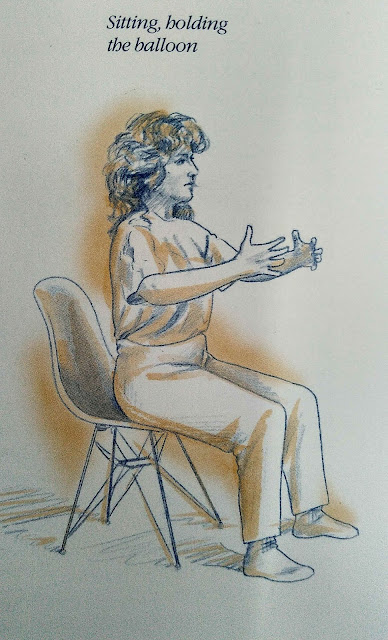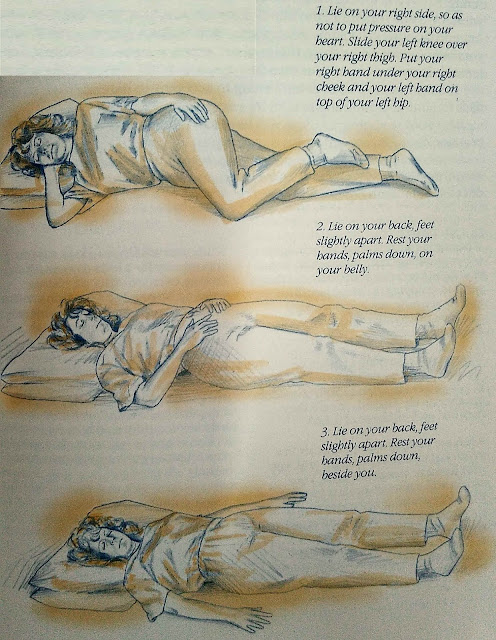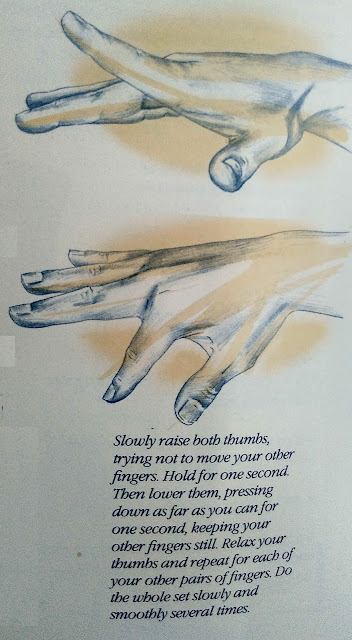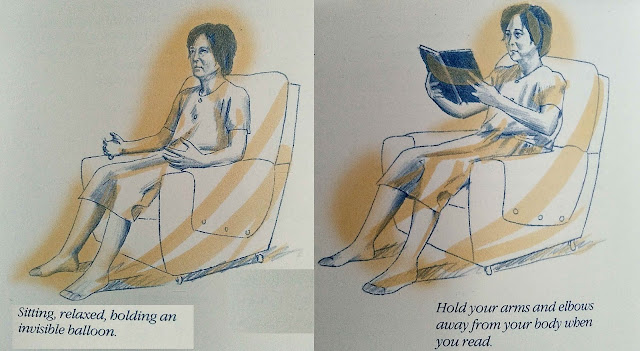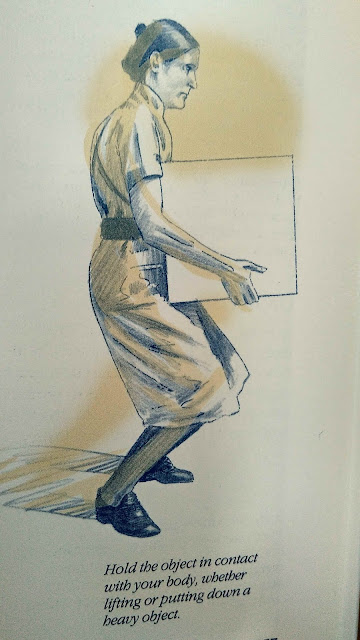WAY OF ENERGY (ZHAN ZHUANG) IN DAILY LIFE
The following is taken from
Chapter 8, “The Way of Energy” by Master Lam Kam Chuen. It has useful
guidelines on the use of proper energy and posture in daily life. Watch the
video here on how to practice Zhan Zhuang by Master Lam Kam Chuen.
Energy is always circulating throughout
your body. It permeates all living tissues and all organ systems. But the
pressures of your day-to-day life, the physical hassles and mental stress, can
cause the energy to stagnate. It can become blocked and over time; cease to flow
to vital organs. Tense, contracted muscles produce stiff and abrupt movements
that block the natural, sustained flow of your energy. These hard, hasty
movements ultimately slow you down because they inhibit and then exhaust your
energy. By contrast, gentle rhythmic movement can be continued with greater
effect over much longer periods of time.
There are numerous moments in
the day, whether at home, travelling, at work, or even sleeping, when you can
apply the basic principles of Zhan Zhuang exercises. They will not only help
you relax, but will also help you freshen up and concentrate with renewed
vigour. There are even ways you can do a little exercise discreetly that no one
will realize it.
All you have to do is to apply
the Zhan Zhuang postures you have already learned to the situations you find yourself
in, each day. This will ease the pathways of your internal energy making your
movement more fluid, less prone to accident, more balanced and less tiring.
You can also reduce tension in
your body during everyday activities by paying attention to how you do things.
When you brush your teeth, do you exert a lot of pressure on the toothbrush? Is
your wrist still? When you write, do you press down hard with your pen or
pencil? Are your arms or muscles tense? When you use a paintbrush, saw or
scrubbing brush, is your grip stronger than you need to do the job smoothly?
The great Chinese calligraphers
take up their writing brushes with a minimum of effort and produce faultless
flowing movements that are at the same time, full of vigour and completely controlled.
Try this when you hold a cup, take a photograph or polish the kitchen table,
for example, and you will get the same
effect with less muscle power.
THE DAILY CYCLE
You can practice your Zhan
Zhuang training at any time in the day by adapting the positions to suit your
daily activities. For example, you can practice the second position – Holding the
Balloon – while sitting in the office, when travelling or while watching
television. Even practicing for a few minutes will be refreshing and the effect
will intensify as you build up your Zhan Zhuang practice every day.
From the moment you get out of
bed in the morning and through your day, you can use your Zhan Zhuang training
to improve your performance. Even when you go to sleep, the positions below
will help you.
[1] Getting Up
First thing in the morning, even
if you are not fully awake, stand quietly beside your bed. Stand in a
comfortable, natural position, with your hands hanging loosely by your sides,
for two or three minutes. Don’t stand longer than five minutes. Just relax with
your eyes opened or closed, whichever you find most comfortable. After that,
you can start your normal morning activities. If you need to use the toilet the
very first thing in the morning, do that before standing, but don’t do things
like washing your face or brushing your teeth, which jar your system awake. Do
those only after you have been standing for a few minutes.
[2] Standing and sitting
Remember that whenever you are
standing or sitting, you can find a way to relax and practice your exercises at
the same time. For example, when sitting, don’t slouch against the back of the
chair. Sit slightly away from the back, rest your forearms on the armrests or
rest your wrists on your thighs. Open your hands slightly as if holding an invisible
balloon on your lap. Or rest your forearms and open hands on the table in front
of you.
[3] Sleeping
We are seldom fully relaxed
when asleep. Even without nightmares, our sleep is disturbed by the latent
tensions and we are often in constant fitful movement. Try to calm yourself and
center your energy around your navel before you sleep, by using any of the
three positions illustrated below.
DOMESTIC WORK
When washing up, dusting, vacuuming
or making beds, or doing any other tasks around the home, look carefully at
what you are doing. Are you gripping things so tightly that your knuckles go
white? Are you tensing all the muscles in your arms and neck? Are you twisting
your spine into awkward positions? Any time you find yourself doing these
things, stop. Straighten up. Let the tension drain away from your muscles and
then see if you can use the basic principles of Zhan Zhuang to accomplish the
task, with minimum muscle and maximum energy.
While out shopping, you will
have lots of opportunities to practice Zhan Zhuang and to put its’ principles
into effect. As you drive or go by public transport to the market or shops, use
the techniques described below to develop your ability to relax.
[4] Out shopping
When lifting and carrying,
remember to use your energy, not your muscle. See how lightly you can grasp and
hold things without dropping them – you will quickly see how much unnecessary
muscular force and tension you waste on daily tasks.
When you are carrying a basket
or reaching for items or just moving around in a shop, pay attention to your
shoulders. Are they nicely relaxed – or are they hunched up from force of
habit?
If you are pushing a shopping
cart in a supermarket don’t use a tight grip. Let your hands or wrists rest on
it. Your weight will naturally move it forward. Experiment with it when you
turn it. Are you gripping it with your arms and shoulder with tension, or are
you guiding it like a balloon, with a light upper body and your feet firmly
rooted beneath you?
While you wait to pay, don’t
miss the opportunity for a little discreet Zhan Zhuang exercise. After all, you
are standing, so practice any of the standing exercises you feel are
appropriate and make invaluable use of your time!
[5] Arthritis tip
A mistake quite a few people
make is to plunge their hands into boxes of frozen food, often unnecessarily.
Even doing this once a week can contribute to arthritic complaints. Whenever
possible, look to see what you want, then quickly pick it up and put it straight
into your basket.
[6] Don’t slump
When you want to take a break from
your household chores or if you feel exhausted when you get home from shopping,
don’t just throw yourself down on a sofa. That is bad for your posture, bad for
your breathing and bad for your energy. Take a few minutes to renew your energy
and refresh yourself with a little Zhan Zhuang. You’ll be amazed at how good
you feel.
Sit or stand in one of the Zhan
Zhuang positions for several minutes. Start by relaxing from the top of your
head, down through your neck, shoulders and spine and down through your feet.
The tension caused by heavy use of your muscles will ease and natural
circulation of vital energy will happen on its own.
[7] Calm your anger
If you allow yourself to become
angry or tense, the flow of energy in your body can get seriously blocked. Zhan
Zhuang will help you calm down. Whatever you are doing, STOP! Pour a glass of
water. If possible, use a light green glass, as the colour green has a powerful
calming effect on the nervous system. Set the glass of water in front of you.
Then stand or sit, holding your arms in any of the basic Zhan Zhuang positions.
While in the position, gaze at the water in the glass. The Chinese way is to
gaze at an aquarium to calm the spirit. Within minutes, you will feel the
natural balance and inner strength of your system being restored.
[8] Energy wash
When you are at home or at work
and you are getting tired, or becoming tense and angry, you can use your natural
energy reserves to restore your vitality and calm your nerves.
When you feel tired, go and
wash your face in warm water and dry it. Then sit down at a desk or table. Put
your hands and forearms on the table, and hold your hands loosely open, holding
the invisible balloon. Close your eyes. Breathe naturally, calmly and quietly.
Sit still in that position for two or three minutes. Then open your eyes. Lift
your hands and “wash” your face several times with your palms, moving slowly
from your chin, over your face and back across your ears. This will rapidly
refresh your system at any time of the day and recharge the energy of your body
and mind. You can also do it in one of the Zhan Zhuang positions, the second
position is probably the best.
AT WORK
Many people damage their backs
and wear themselves out by regularly sitting in hunched, cramped and stressful
positions at their desks and meetings. Ask yourself: do you often push your
shoulders up by leaning forward heavily on your elbows? Do you twist your spine
and cross your legs? Do you curve downward in a slouch as you sit? Do you
compress your chess by folding your arms in various ways?
The same goes for the use of
modern devices such as mobile phones, tablets and e-book readers. With
smartphone users now spending an average of two to four hours a day with their
heads dropped down, this results in approximately 700 to 1,400 hours a year of
excess stresses seen about the cervical spine.
People carry out their lives by
text, they get carried away and don’t realise they need a break. This can cause
head pain, neck pain, arm pain and numbness, because a normal standing position
is facing forward and all the curves of your neck and spine are in correct
alignment. But when you drop your chin on to your chest for a long period you
are stretching the whole structure. Eventually, in conjunction with a sedentary
lifestyle, it could lead to serious consequences.
We unthinkingly generate a lot
of physical stress in our bodies during our working day. Even the most basic
office practices such as answering our mobiles, making a call or answering the
phone are likely to create tension. But you can convert these and many of your
work movements into excellent short Zhan Zhuang practice sessions, which free
your energy and leave you more alert for work.
Breaking the habits of a
lifetime won’t be easy. Whenever you catch yourself holding tension in your
body, try to incorporate a little Zhan Zhuang exercise into whatever you are
doing.
[9] Sitting
Move slightly forward in your
chair so your back is completely free. Slowly straighten your back. Don’t arch
it, just let it straighten naturally. Place both feet flat on the floor. Don’t
cross your legs, especially over your thighs, as this restricts the flow in
some of your major arteries. Rest your forearms on the armrests of your chair;
or rest your wrists on your thighs. Keep your upper arms away from your torso,
leaving your chest free to move.
At a desk or table, rest your
forearms (not your elbows) on the surface, with your weight dropping downward
on your hanging elbows – not pressing upward into your neck and shoulders.
Let your hands curve naturally
and think of holding a large balloon gently between them. Breathe naturally and
quietly. Keep your mind on what you are reading or saying or listening to. Your
relaxed body will keep your mind alert.
[10] On the telephone
If you are standing when you
use the phone, shift your weight on to one leg. Angle your other foot slightly
away. Hold the receiver lightly with only the thumb and first finger of the
hand on the side of the body that is bearing your weight. Relax your other
fingers, your wrist and your forearm. There should be no tension in your torso
or the side of your body that is not bearing your weight.
If you are seated, lean your
upper body weight on the elbow of the arm you are using to hold the phone.
Shift your weight to that side of your body so that it runs down through your
elbow, your buttock and your foot. The other side of your body should feel
completely weightless. Hold the receiver lightly using only your thumb and
first finger.
DO NOT:
·
Hold
the receiver by hunching up your shoulder
·
Lean
your head over to one side while talking. You MUST keep it upright
·
Grip
the receiver. You MUST hold it lightly
·
Fold
your free arm across your chest and tuck it under your other arm – this constricts
your chest.
AT THE MOBILE PHONE, TABLET OR
E-BOOK READER
The following are simple and
easy tips for eliminating the mobile phone slump and avoiding these negative
side effects:
·
Hold
Your Phone at Eye Level
Hold your phone at eye level
when typing on your phone. This may look funny, but it will force you to hold
your head, neck, and shoulders in a better position. It has a built-in time
restricting feature, and not to mention a slight embarrassment factor. This is
because you will notice when you hold your phone at eye level your shoulder
muscles tire quickly, and it just looks funny.
This will force you to only use
your phone for short periods of time, whereas when you sit and comfortably look
down at your phone, you may be able to use your phone for long periods without
experiencing any form of discomfort (physical or social).
·
Lie
on the Floor
If you are at home or in a
setting where you feel comfortable being on the floor, then lie down on your
back with your knees bent and your feet flat on the floor. Hold your phone over
your face to text and surf the Internet. This position will put your head in
the same plane as your shoulders, and will allow the muscles of your neck and
upper back to relax.
Just like tip number one, your
shoulder muscles will quickly begin to fatigue in this position - which is a
good thing! This will heighten your awareness of the amount of time you are
spending using your phone.
·
Voice
to Text
If your phone has a voice
transcription feature, learn how to use it and talk your text messages, social
media posts, and emails. This may take a little time to get accustomed to, but
your neck, shoulders, and back will thank you.
·
Remove the
distractions from your phone
The most drastic, highly
recommended, and by far most effective of all method is to remove social media,
email, and games from your phone. Instead, try scheduling designated time to
handle your emails and social media from your computer where you can set up
your ergonomics to support good body positioning as you type.
AT THE COMPUTER
The problems caused by working
at a computer keyboard are similar to the results of prolonged typing, writing
or playing the piano. The underlying cause is tension and extreme cases, the
strain leads to damage of the nerves in the wrist. In traditional Chinese
medicine, the condition is cured by massage, the application of herbs and
special exercises.
You can use the Qigong
technique described below to help or prevent or relieve the tension and pain in
the hands. Do the exercise for a few minutes before starting work at the
keyboard or if you start to feel tired while working.
[11] Finger Exercises
Stand in the second position –
Holding the Balloon for two or three minutes. Then, lower your hands to elbow height,
loosely outstretched and facing downward in front of you, as if resting on a
counter. Follow the instructions below in the picture and then massage your
hands all over.
If you are seated, you can do
the same thing in the sitting position, making sure your back is naturally
vertical and not curled against the back of your chair.
These finger exercises not only
help to remove strain in your hands and improve the circulation of blood in
your gingers, but are also an excellent stimulation for your brain.
[12] Take a break
Some people are mesmerized by
computer screens and work for hours without a break. This is the cause for many
stress-induced complaints such as eye strain, tension in the back and
headaches. Look after yourself; take a break at least once an hour. Get up,
walk around and do something else for a few minutes before resuming work. This
is essential if you want to avoid long-term problems.
TRAVELING
Think of all the ways that most
of us move about in our daily lives – on foot, on public transport, in cars.
Each of these modes of transport provides opportunities for some discreet Zhan
Zhuang practice, whether it be a moment of relaxation or a modified posture for
standing or sitting.
ON PUBLIC TRANSPORT
[13] Waiting
Stand in the first position – the
Wu Chi posture. Your whole body is relaxed. Shift your full weight on to one
leg. Turn your other leg outward at a slight angle. Slip your hands inside your
pockets, leaving only your thumbs outside. Rest the full weight of your hands
on your pockets. Feel your shoulders sinking downward. Breathe naturally. When
you tire of one position, shift your weight to your other leg or on to both
feet equally. Feel free to look around and talk, but try to keep the rest of
your body completely still.
If you have no pockets: stand
in the first position, weight on one leg or on both feet. Hold your hands across
your lower abdomen or dantien, men with the left hand on top, women with the
right hand on top. You can slip the thumb of your top hand gently inside the
palm of your other hand.
Alternatively, you can stand
with your weight on one leg, resting your hands lightly on your thighs so that two
or three fingers are touching your leg. Bend your elbows very slightly away from
your body. Always make a small “L” or “V” with your feet, so that there is an
angle of 45 to 90 degrees between them.
[14] Standing up
Support your weight by holding
an overhead strap, a pole, a handle or even by resting part of your body, such
as your hips, against some part of the bus or train. Let as much as possible of
your weight rest at that point. If you have a free hand, rest it inside your
pocket or lightly against your thigh. Relax your entire body, allowing your
weight to rest on the point that supports you, but not so that your grip or
body becomes tense. Let your energy support you.
[15] Sitting
Make sure you sit facing the
direction which the vehicle is moving. Try to sit comfortably. Drop your
shoulders. Rest your forearms on the armrests if you can, letting your palms
drop down to hold an invisible balloon on your lap. Or let your wrists rest on
your thighs, your palms turned slightly upward as if holding the underside of
an invisible balloon between them. Relax and breathe naturally. Keep your eyes
open and your mind alert.
DRIVING
[16] Your hands on the wheel
Don’t grip the wheel. Don’t use
strong muscle power to turn it. Let your fingers curve lightly around the
wheel. Drop your shoulder and elbows. Let the tension in your upper arms,
forearms, and wrists run off like water.
[17] Waiting
This is an excellent moment to
practice Zhan Zhuang. Whether both your hands are on the wheel or one is one
the gear stick, adjust your palms and fingers to resemble an open, relaxed Zhan
Zhuang position. For example, you can rest both arms and pretend you are holding
a large a balloon. If you tend to be very tense, try playing smooth-flowing
music in your car. Keep your mind alert, your head floating lightly from the
crown of your skull and breathe calmly. Even a few moments will help your whole
system.
WALKING
If you want to refresh
yourself, go for a walk and try the following. Slip the four fingers of each
hand in your trouser pockets, leaving your thumbs outside. Rest the weight of
your arms against the fabric of your pockets, keeping your elbows slightly away
from the sides of your body. Walk slightly more slowly than usual. If possible,
put your arms in one of the Zhan Zhuang position and walk, holding your arms
steady. If you can’t find a convenient place to walk, stand in one position,
hold the invisible balloon and slowly mark time on the spot for two or three
minutes.
ON A BICYCLE
An upright bicycle is best for
this exercise. As you ride, drop your weight into your lower body. Let your
upper body rest, completely relaxed. Hold the handlebars with your thumbs and
forefingers only (see below). Let your other fingers rest lightly over the
bars, as if you were resting your palms and fingers on a floating balloon. Don’t
grip the handlebars unless you need to brake. Do all the work with your lower
body. Imagine you are moving forward like a waterfowl on a pond: underneath you
are circling your feet like a powerful paddle; above your entire body is
travelling effortlessly forward.
LEISURE
You will derive enormous
benefits from your Zhan Zhuang training in all your leisure activities.
Applying Zhan Zhuang principles to your activities allows you to work more
smoothly and safely on DIY jobs, for longer periods; and prevents backache
after lifting and digging in the garden.
Reading or watching TV
[18] You can even practice Zhan
Zhuang in an arm chair. Sit straight even if you rest your against the back of
the chair. Open your hands and let them hold the balloon gently in front of
you. If there are no armrests, let your writs lie on your thighs and hold the
balloon in your lap. When you read, hold the book in your hands in front of
you, always making sure your arms and elbows are away from the body.
Doing it yourself [DIY]
Most DIY enthusiasts use a tremendous
amount of muscle when they are gripping, hammering and sawing – even when using
electric tools. But you can usually work more smoothly, more safely, and for
longer periods, if you apply the Way of Energy.
Take using a hammer, for
instance. Most people simply grip the hammer as hard as they can and use every
ounce of muscle to deliver the blow, constantly tensing their arm, wrist and
finger muscles. After a while, their muscles begin to feel the pain and need a
rest. The only comfort is the thought that all those aching muscles are slowly “turning
to steel”.
There is another way. The Way
of Energy is the way of the bamboo, not the way of steel. The bamboo is one of
the strongest and most durable woods on our planet. It rarely breaks, yet it
can bear enormous weights and survive fierce tropical typhoons. Instead of thinking
your hands and arms as pieces of steel, treat them like bamboo.
The principles out lined below –
using maximum energy and minimum muscle – can be applied to dozens of other DIY
and household tasks.
Lifting heavy weights
At home, at your work place or
in your leisure activities, you are likely to have to lift a heavy weight at
some point. It might be a box of papers or soft drinks; it might be a table or
a piece of equipment. Whatever it is, and whatever the circumstances, you can
apply your knowledge of Zhan Zhuang to lift the weight more easily and help
prevent injury.
There are eight points to
remember for both lifting and putting down heavy weights. Notice the difference
in the sequence of breathing between lifting and lowering.
Lifting
1. Relax your arms, shoulders and
upper body.
2. Let your weight sink into your
lower body.
3. Squat down to grasp the object,
keeping your back straight and relaxed.
4. Hold the physical object in
against your body, so it is in physical contact with you.
5. Breathe out before standing up.
6. Breathe in as you stand up,
carrying the object with you.
7. Stay still for a second after
standing up. This is very important.
8. Before you move, be clear in
your mind about the direction of your movement, then move. Your mind should
move first.
Complete the movement
It is essential to breathe in
as you lift and to complete the lift fully before making any other movement. A
lot of back injuries are caused by people moving sideways or at an angle while
they are still lifting or by merging the end of the upward movement with the
beginning of the next movement. This can place great strain on the spine and
cause dislocation. Be sure to complete the lift fully, and allow your mind to
settle, before going on to your next movement.
Lowering heavy weights
1. Relax your arms, shoulders and
upper body.
2. Let your weight sink into your
lower body.
3. Hold the object in contact with
your body,
4. Breathe in, without moving.
5. Hold your breath as you squat
down to lower the object.
6. When you have lowered the
object to its new resting place, breathe out.
7. Pause for a second.
8. Breathe in as you stand up.

